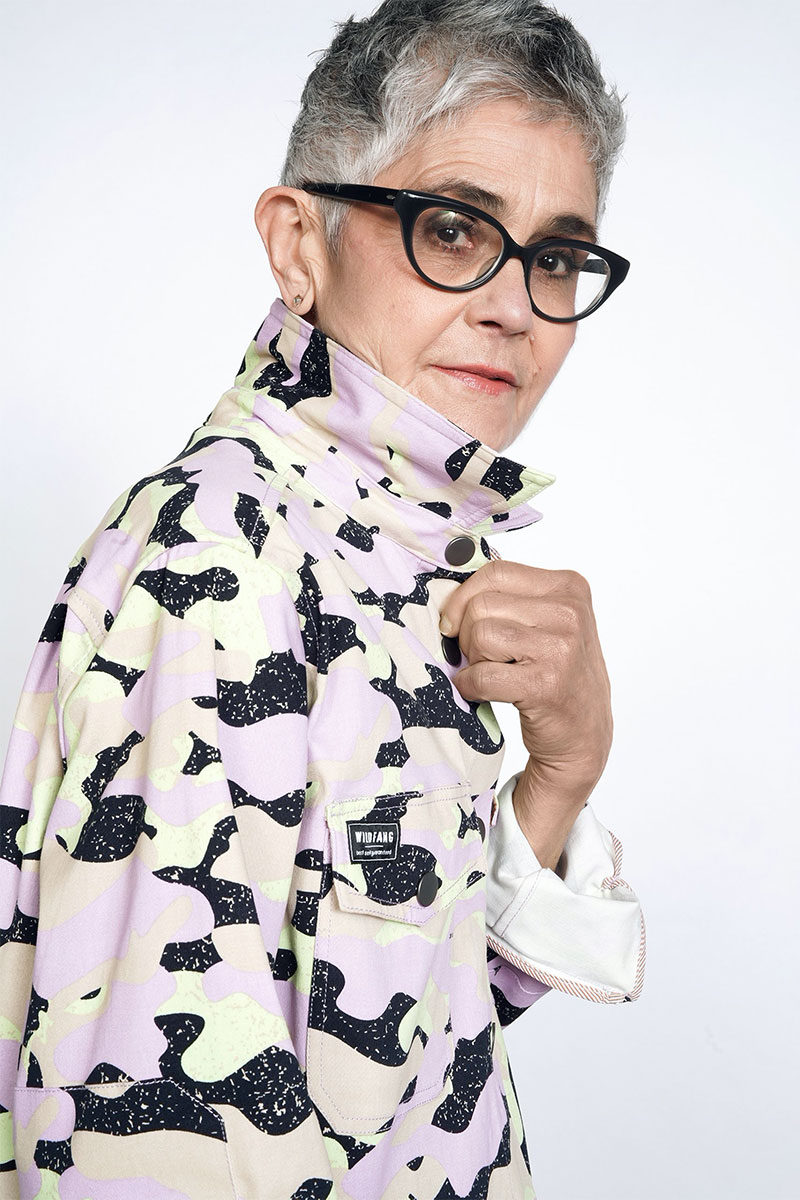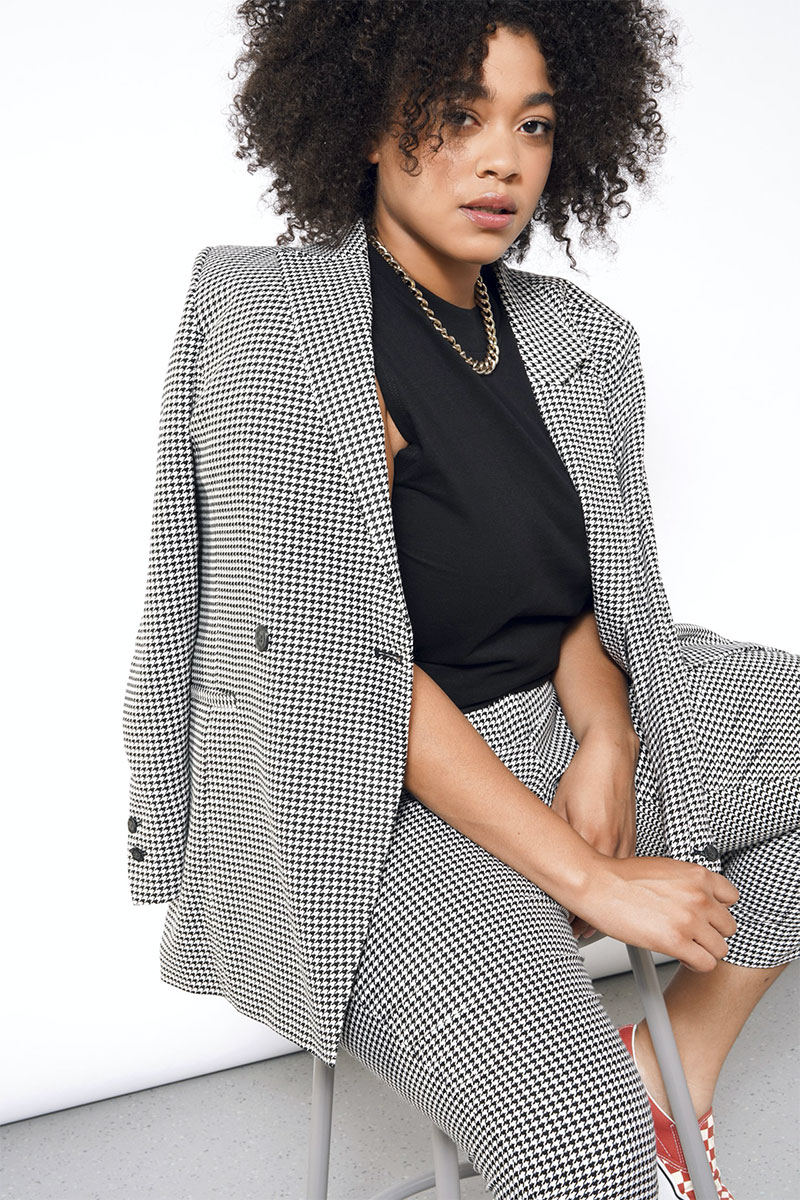Welcome to trends week. This is the first of five posts discussing the next six months of trendy fashion. Breaking things up into five separate posts makes the info easier to digest, and we can talk trends all week in the comments section and the forum.
These days you will see it all on the runways of fashion week, which reflects the enormous diversity of fashion silhouettes and outfit combinations. The variety is chaotic and quite overwhelming, but important themes and looks do emerge. Some will become mainstream, while others will stay fringe.
Some trends are gloriously impactful and change the direction, face, and image of fashion and style altogether, moving the industry forward. I call these mega shifts directional trends. Here are the most important ones I see coming through in fashion.
1. Sustainability and Ethics
The heightened awareness of reducing our carbon footprint and saving our planet has the fashion industry on its toes. Ramped up efforts to trade, manufacture and sell more sustainably and ethically have become a prerequisite for most designers and retailers. This is a very good thing. Using recycled nylon, plastic and polyester is a lot more common than it used to be. Using up fabrics in stock rooms, producing vegan and bio-based materials and fabrics, minimizing or banning real fur, upcycling clothing and accessories, creating circular economies for cleaner production practices, and recycling fabric waste are all well on their way to becoming the norm.
Making perfect sustainable and ethical wardrobe decisions is extremely complex. There are no easy solutions, and many compromises. But we have to think about sustainability and ethics because the problems won’t go away unless action is taken. Every small action counts, even if it’s just to ease your conscience. So these days, you have to reflect about what sustainability and ethics means for you and your style, and be vigilant about the actions that you can manage regularly. Sustainability means different things for different people, and some can manage it more easily than others. It’s not a contest, so by all means compare, but do not despair. As long as you’re making a point of being sustainable and ethical your way, it’s a good thing.
2. Style Freedom
Style is as liberated as it has ever been. There are no rules, and no one way to look stylish. You don’t need to fit into a particular box to look and feel fabulous. The idea of a dated wardrobe item is in itself a dated concept because every silhouette and proportional mix can look stylish if it is worn with conviction, confidence, ease, and is a good fit.
Trends are no longer seasonal and fads no longer exist. Regular trends are becoming harder to define, and at some point they will be irrelevant. That’s why creating a signature style and evolving it over time in small or big ways is the way to go. Wear the newer trends, don’t wear them, remix them, repeat them, reinvent them — it’s all good. Do your own thing, and enjoy the freedom to express fashion and style in a way that works best for you.
3. Diverse Aspirations
In terms of being accepting, representative, and welcoming of all humankind, the fashion industry has a long way to go. But the industry is more diverse than it used to be, which is a step in the right direction. Slowly but surely, we’re seeing models of varying ages, ethnicities, and body types showcase fashion and style. Gender fluidity is a lot more recognized, and beauty in all its forms is making a stylish statement. Size assortments are not perfect, but are becoming more inclusive.
4. Practical Comfort
Before the global pandemic, our fast-paced world expected us to travel at the drop of a hat, multitask, and work long hours. Our current COVID lifestyles don’t include much travel, but practical comfort is arguably even more important. That’s why it’s trendy to wear fashion or athletic sneakers with anything, and to throw on leggings with a blazer, dressy bag, and glam jewellery. Unstructured clothing, Athleisure items made of technical fabrics, Sporty Luxe outfit vibes, elastic waists, fabrics with stretch, machine-washable workwear, clothing with hidden pockets, dressy flats, puffer coats, and the oh-so-popular juxtaposition of remixing casual with dressy pieces continues to make a strong statement in today’s fashion. And accessories like masks have become an integral part of many outfits.
5. Classics and Icons
Designers and retailers are making a point of giving modern classics and iconic items their fashionable moment. They are remixing them in new ways to prevent boredom and showcase versatility. Wear a dressy trench coat with joggers and sneakers. Throw on a blazer and Dr. Martens with anything. A baseball cap, denim jacket, and Chucks can work with a cocktail dress. A pencil skirt can be worn with your varsity sweatshirt and Birkenstocks. This trend is promoting sustainability because wearing an old item in a new way can be better than buying a brand new item.
6. Happy Tension
The tension between opposing trends is more apparent than ever. There is chunky and refined footwear, dressy remixed with all sorts of casual, heels and flats, brights and neutrals, body-con and slouch, soft romance and tough edge, old and new, and all sorts of polish that lives happily with a “rough around the edges” appearance. Natural vibes are as popular as unnatural ones. Structured outfits are as fab as unstructured looks. Volume is friends with its streamlined opposition, and cropped lengths are as great as full lengths. Pointy toes are as important as square toes, stilettos look just as fab as block heels, and maximalism shakes hands with minimal looks.
This type of happy trend tension creates fashion diversity and reinforces doing your own thing. It gives looks a higher longevity factor, making it harder and harder to call an item “dated”. These happy tensions support sustainability, and our need to be as diverse in fashion as we can be.
7. The ‘70s, ‘80s and ’90s
There is something extremely compelling about these decades of fashion, which is probably why they keep on coming through and influencing today’s fashion so strongly. With respect to silhouettes and outfit combinations, you’ll see a strong flashback to the ’90s. But since the early ‘90s were a meaningful nod to the ’80s, and the mid ‘90s had lots of ‘70s appeal, I see it as more of a flashback to three decades instead of one. This is another nod to sustainability, because it’s hip and fashionable to thrift and wear vintage items that are several decades old instead of passing them on as dated looks. Levi’s has a site dedicated to pre-owned and pre-loved jeans, and the second-hand luxury handbag business is booming.
8. Personal Slogans
Designers and retailers continue to use their influential platforms to make statements that are important to them and their brand. Many of the messages are political, but sometimes they’re light-hearted, funny, and take the mickey out of the ridiculous fashion industry. Slogans about feminism, gender equality, politics, and climate change are not uncommon, as are sentimental slogans, humourous expressions, and graphics that pull at your heartstrings. The trend is something we can incorporate into our own styles by wearing slogans and outfit combinations that showcase a personal message. It can be subtle or bold, and executed your way.
It’s important to remember that despite what’s happening on the runways or in trend forecasts, retailers will continue to supply the market with items that perform well at retail. Items will stick around for as long as consumers will buy them. Designers do not have the power to control trends as much as we do collectively as consumers. We are the ones in control.











